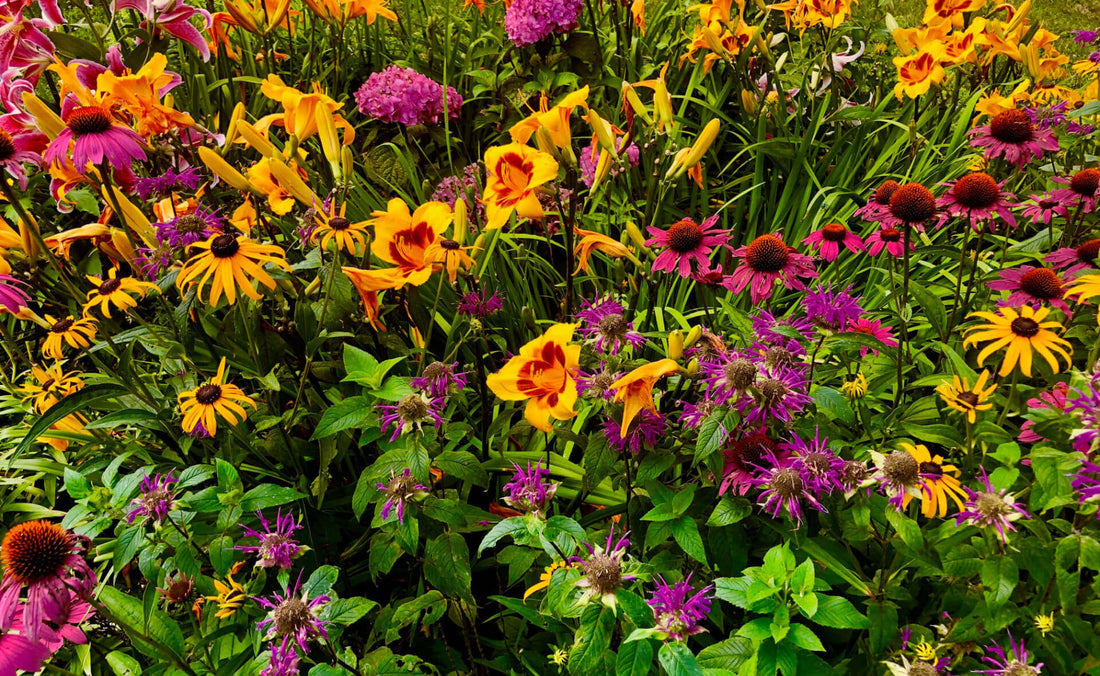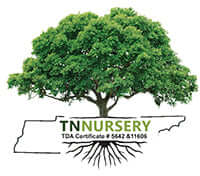
The Beauty and Benefits of Self-Seeding Perennials
Share
A Deep Dive into Butterfly Weed, Sunflowers, Coneflowers, Bee Balm, Black-Eyed Susan's, and Primrose
Self-seeding perennials are a boon to both novice and experienced gardeners alike. These hardy plants require minimal maintenance and effortlessly return year after year, adding vibrancy and life to any garden. Standouts are among the myriad of self-seeding perennials: butterfly weed, sunflowers, coneflowers, beebalm, black-eyed Susans, and primrose. This article will explore the unique characteristics and benefits of these beautiful and resilient plants.
Butterfly Weed (Asclepias tuberosa)
Butterfly weed, scientifically known as Asclepias tuberosa, is a captivating self-seeding perennial that belongs to the milkweed family. Native to North America, this plant boasts stunning clusters of bright orange to yellowish-orange flowers that add color to your garden and attract an array of pollinators, particularly butterflies and bees. The vibrant blooms are a source of nectar for butterflies, making it a vital part of any butterfly garden. Beyond its aesthetic appeal and ecological significance, butterfly weed is easy to grow and maintain. It thrives in well-drained, full-sun locations and is drought-tolerant once established. Its ability to self-seed ensures a consistent presence in your garden year after year. Additionally, this perennial is deer-resistant, further enhancing its appeal to gardeners.
Sunflowers (Helianthus spp.)
Sunflowers (Helianthus spp.) are among the most iconic self-seeding perennials, celebrated for their cheerful and sun-like appearance. These tall, sturdy plants produce large, yellow, or golden-yellow flower heads that follow the sun throughout the day, a phenomenon known as heliotropism. Sunflowers are visually striking and serve as a valuable food source for birds and pollinators, making them an excellent choice for wildlife-friendly gardens. Sunflowers come in various sizes and varieties, allowing gardeners to choose the perfect fit for their space and aesthetic preferences. Whether you opt for towering types or dwarf sunflowers, these self-seeding perennials require minimal care, thriving in full sun and well-drained soil. Their ability to reseed ensures a continuous display of radiant blooms.
Coneflowers (Echinacea spp.)
Coneflowers (Echinacea spp.) are beloved for their distinctive daisy-like flowers with raised, cone-shaped centers. These self-seeding perennials are beautiful and renowned for their medicinal properties. Echinacea, derived from coneflower species, is a popular herbal remedy known for its immune-boosting properties. In addition to their herbal uses, coneflowers are attractive to pollinators, including butterflies and bees, and their sturdy stems make them excellent cut flowers. Varieties like Echinacea purpurea come in various colors, from classic purple to vibrant pink and white, allowing gardeners to create eye-catching displays in their landscapes. Coneflowers are adaptable and thrive in various soil types, making them versatile for gardens. They not only prefer full sun, but they can tolerate partial shade. Their self-seeding nature ensures a consistent presence in your garden, year after year, with minimal effort required.
Bee Balm (Monarda spp.)
Bee balm (Monarda spp.), also known as wild bergamot or Oswego tea, is another captivating self-seeding perennial with a rich history of both culinary and medicinal use. Native to North America, bee balm produces distinctive, tubular flowers in red, pink, purple, and white shades. These flowers are visually appealing and a magnet for pollinators, especially bees and hummingbirds. One of bee balm's standout features is its aromatic leaves, which can be used to make herbal tea. It's also known for its antimicrobial properties and has been traditionally used by Indigenous peoples for various medicinal purposes. Bee balm is relatively low-maintenance, thriving in full sun to partial shade and well-drained soil. Its tendency to self-seed ensures a steady supply of fresh blooms and leaves, making it a valuable addition to any herb or pollinator garden.
Black-Eyed Susan's (Rudbeckia spp.)
Black-eyed Susan's (Rudbeckia spp.) are iconic North American wildflowers known for their sunny, golden-yellow petals and dark, prominent central disks, which give them their distinctive "black-eyed" appearance. These self-seeding perennials are beloved for their ability to thrive in various conditions, from meadows to garden beds, and they bloom profusely from late summer through early fall. Black-eyed Susan's are visually appealing and are crucial in supporting pollinators, including bees and butterflies. Their cheerful blooms add a touch of warmth to any garden, and their adaptability makes them an ideal choice for low-maintenance landscapes. These perennials are drought-tolerant once established, prefer full sun to light shade, and can thrive in various soil types. Their ability to self-seed ensures a continuous display of vibrant flowers, making them valuable to any garden.
Primrose (Primula spp.)
Primroses (Primula spp.) are charming self-seeding perennials appreciated for their delicate, often fragrant, and intricately shaped flowers. These early spring bloomers come in various colors, including shades of pink, purple, yellow, and white, adding elegance to the garden after a long winter. Primroses are versatile plants that thrive in different garden settings, from containers and rock gardens to borders and woodland areas. Their self-seeding habit ensures that they return year after year, often forming impressive clumps of blooms. To cultivate healthy primroses, provide them with well-drained soil and partial to full shade. They appreciate consistent moisture, especially during their active growing season. These perennials are an excellent choice for gardeners looking to add early-season color and elegance to their landscapes.
Self-seeding perennials benefit gardeners and ecosystems, including butterfly weed, sunflowers, coneflowers, bee balm, black-eyed Susan's, and primrose. Their stunning blooms beautify gardens and provide essential food sources for pollinators, contributing to biodiversity. These low-maintenance plants thrive in various conditions, making them accessible to gardeners of all skill levels. As you plan your garden, consider incorporating these self-seeding perennials to create vibrant, sustainable landscapes that delight your eyes and the local wildlife. Their ability to return year after year with minimal effort ensures that your garden will continue to thrive and evolve, bringing joy and ecological value to your outdoor space.
